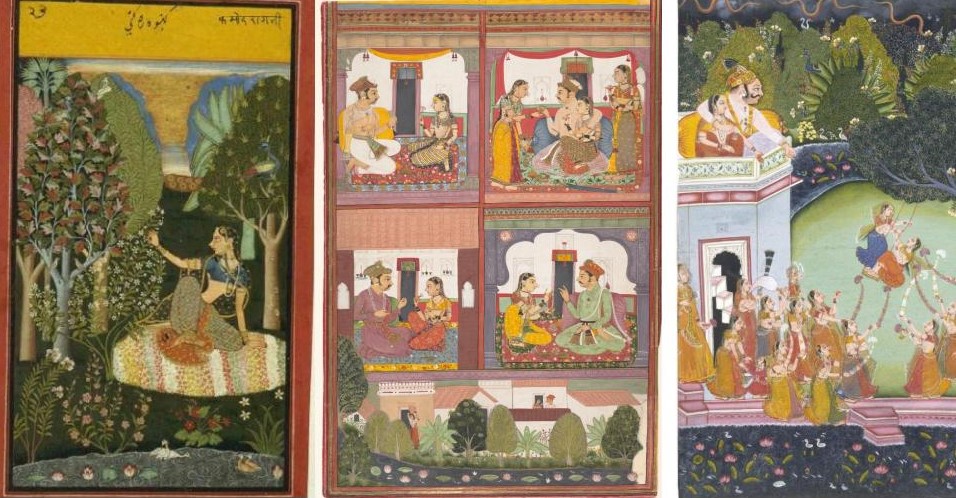The Realm of Indian Miniature Paintings visually narrates the treasures of the ancient past. It dwells as an embodiment of stories, poetries, myths and legends transcending through the canvases of miniature painters that weave these diverse narratives in an enchanting classical composition. Spread across India’s various, vast lands, several Miniature Painting Ateliers hold a distinctive uniqueness of their own. The Pahari Miniature style that blossomed in the hills of Himachal stages these stories in the mesmeric landscapes painted in delightful hues.
At the same time, the Decani Miniatures renders these themes in a classical grandeur. Amidst these eclectic Ateliers of Indian Painting, the Rajasthani Style of Miniature Painting holds a charisma of its own. Spread across the Sahara Desert to the Ancient Aravalli hills, from its grand forts to the royal palaces, from desert gipsies to travelling traders, the Culture of Rajasthan Allures the scenic beauty of its rich heritage. One of the many splendid schools of Rajasthani Miniature Paintings culminated in the Atelier of Bundi Painting in the ancient town of Bundi, surrounded by the natural beauty of hills, flowing streams, lush green trees and blooming flowers, a scene just like that of a Paradise in Desert.
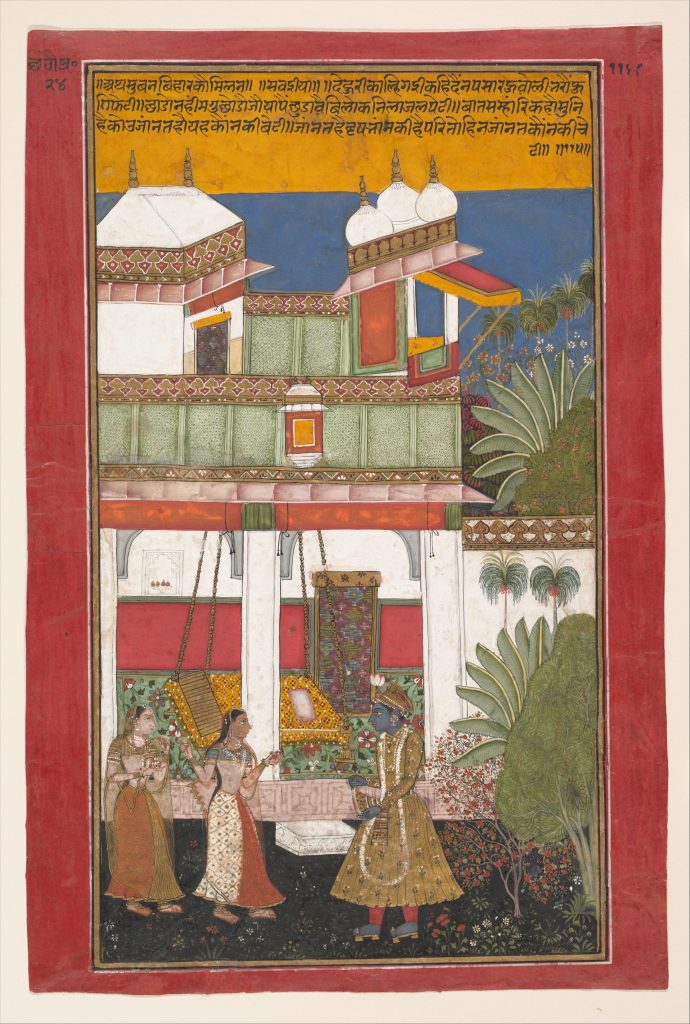
“Rajasthan”, as the name suggests, was once upon a time an Abode of Kings who were not only warriors and ruled their kingdoms with valour but also were actual patrons of Art. The town of Bundi also holds its glory as a very culturally rich kingdom ruled by kings who encouraged the artists and patronized one of the finest styles of Miniature Painting at the Bundi School of Painting. The splendidly surviving Art and Architecture of Chitrashala, also known as the Ummed Mahal, stands as testimony to the legacy of Bundi Paintings. The Chitrashala is a part of the Garh Palace and is recognized as a UNESCO world heritage site, built in the 18th century under the reign of Maharao Ummed Singh. The Chitrashala provides a colourful glimpse of history; the walls and ceiling of this palace are completely covered with paintings of the Bundi School.
It is also believed that the Bundi School had evolved at the Hadoti Court during the time of Rao Bhoj Singh while he was overseeing Chunar near Varanasi as the province’s governor. During his governorship, he directly contacted Persian artists brought by Humayun and commissioned them to illustrate a Ragmala series. The style with strong Mughal influence was first experimented at Badal Mahal in Bundi. The changing political scenarios and connections with different cultures strongly influenced the character of Bundi Art. In richness and brilliance, the Badal Mahal paintings have an affinity also with paintings of Deccan, a region with which the rulers of Bundi were often in contact. Changing patronage also changed the themes of paintings; it has been vividly reflected through several themes painted by the artists of Bundi School since the times of Rao Chattra sal, Bhao Singh, Ummed Singh and Bhishan Singh they covered a variety of themes because the Bundi Kings differed in their taste.
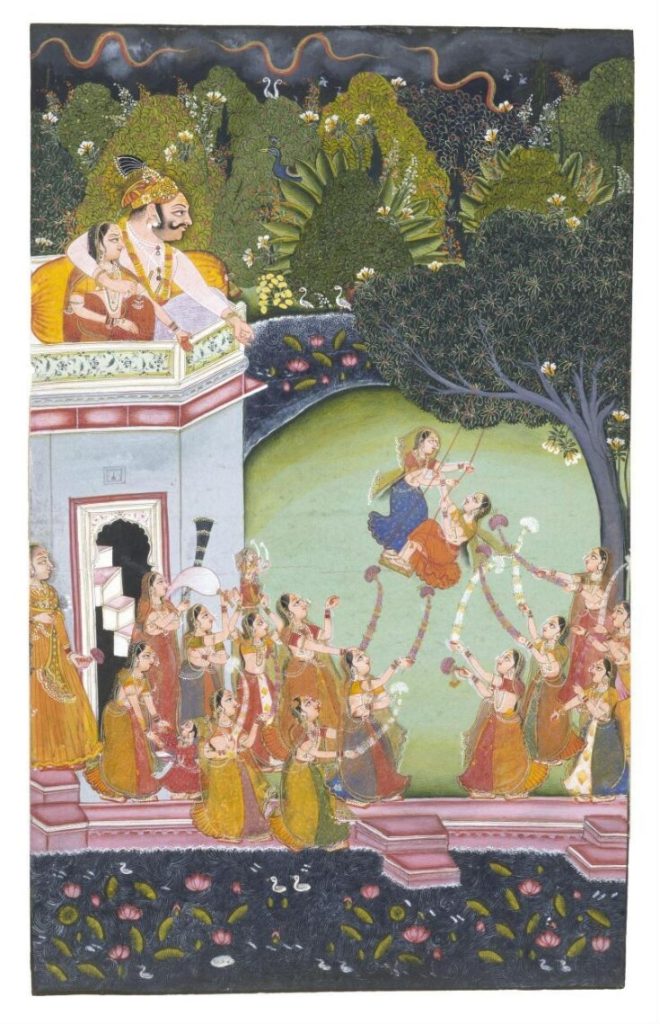
Originating in the early 17th Century, the art of Bundi Miniature Paintings is deeply rooted in prose and poetry of Indian Literature, amalgamated with the classic refined painting style. These paintings bring to life the Iconic Themes of Ragamala, also known as Garland of Ragas, which are personifications of Musical Melodies; Rasikpriya enunciates the eight different intrinsic emotions of the Nayikas, the Heroine in love, while the epic love story of Krishna Radha expresses the divinity of Sringara Rasa, Barahmasa the depiction of twelve seasons and later hunting scenes, court dances and episodes from the kings life gain much popularity.
The Miniature painters of Bundi mastered the art of visual narration of stories and, in fine detail, incorporating the fascinating features of Bundi and its surroundings. The Style of Bundi’s Paintings reflects the flora-fauna and natural beauty of that time. The natural motifs include flowers, trees, birds, fruits and animals. Their compositions and minute descriptions immediately impress us with the originality of their subject matter, mature use of their bright colours and refined treatment of details. The Bundi Artists innately observed and reflected the music, poetry, changing seasons, festivals and marvels of architecture in their paintings, which provided them with a more comprehensive sphere to demonstrate their talents.
The Natural Beauty of Bundi inspired the miniature painters who took particular care to render the lush vegetation of planned gardens full of mango, peepal and plantain trees, flowering creepers and birds and animals in every painting. This way of staging stories in such surroundings became one of the very peculiar characteristics of the Bundi Paintings. Every aspect of the painting is depicted very theatrically; the water in rivers and pools is depicted in swirls, and the sky is in patches of blue. In later periods a peculiar admixture of grey, blue, orange and vermilion is used to depict a dusky sky which turned out to be a unique identifying feature of Bundi’s paintings of succeeding periods.
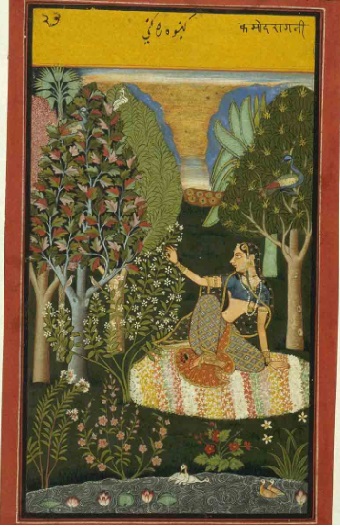
Many scenes of Bundi Paintings are set in the mesmeric architecture of the Fort, representing a rare example of Rajput style – pavilions and kiosks with curved roofs, temple columns with carved brackets, covered with elephants and flowers. We get a pivotal glimpse of the architecture of the old Bundi through these paintings.
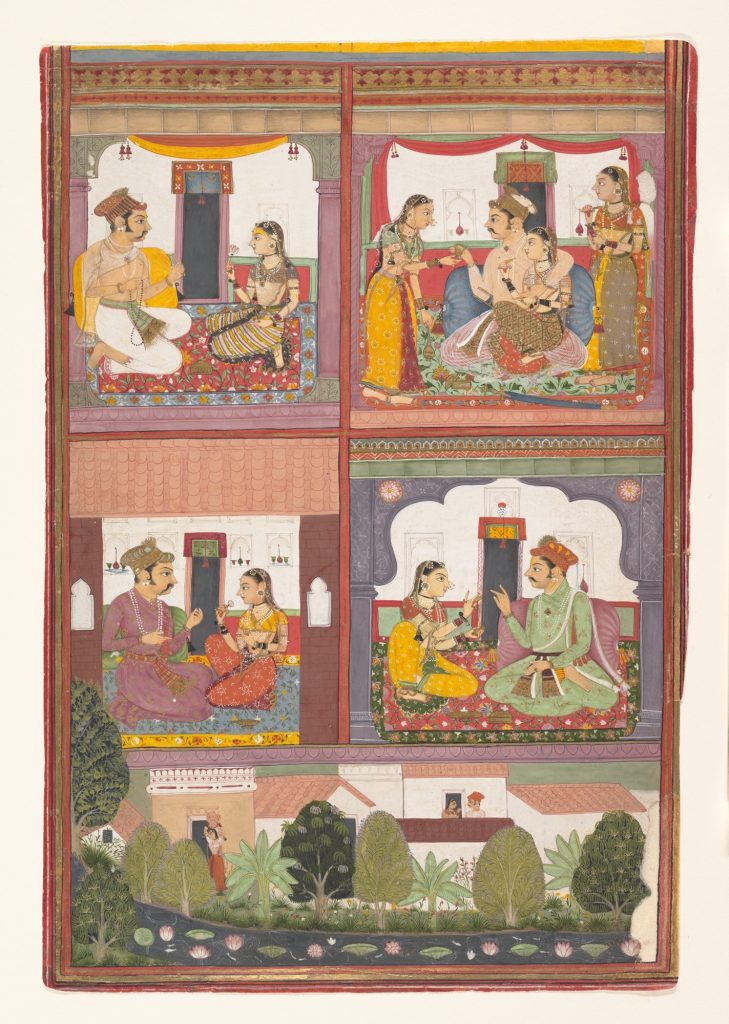
A typical Bundi Miniature would dramatically be painted in bold expressions, depicted with the minutest details, with a very dynamic form and figure. It combined the skills of laying pigments, shading, lining, and ornamenting the objects. All seasons are very vibrantly and vividly depicted, the deep blue skies sprayed with a flight of birds, thunderstorms, cloudy skies, with a unique presence of greyish-black lotus pond, birds and animals shown perched on them, colourful trees and sometimes trees laden with flowers. The Bundi Paintings showcase a rich and elaborate embellishment of costumes and the lavish use of gold pigment, Persian blue, yellow, orange and crimson.
The paintings of Bundi are a part of many International and National Museum exhibitions and Private Collections. In India, the National Museum of Delhi and Kota Museum exhibit some of the rare jewels of Bundi Paintings. Today a handful of artists in Bundi replicate the paintings at Chitrashala on old postcards, Bundi State & and other Royal State Stamp papers, silk cloth, handmade paper and wooden frames.
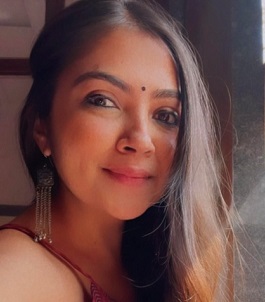
Dhara Mayavat is an Art Historian who graduated from Baroda’s Faculty of Fine Arts.

